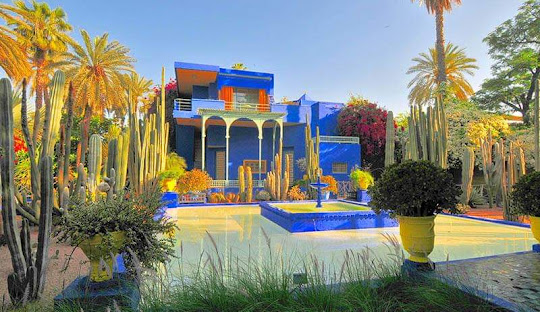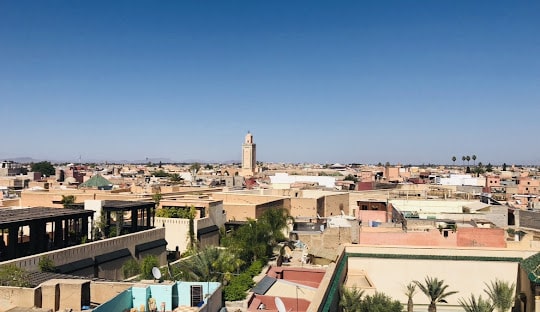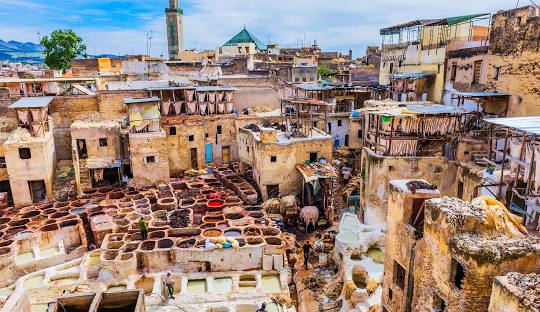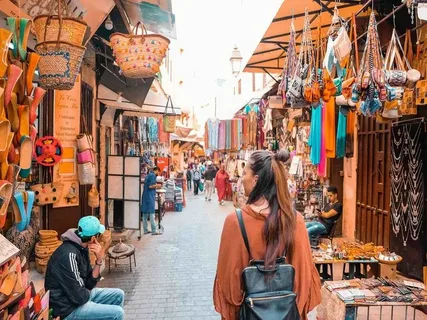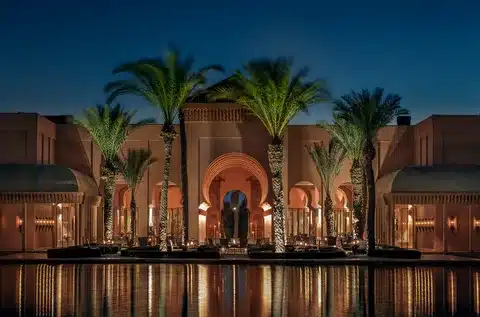In a country rich in history, culture, and natural beauty, the Kingdom is home to several Morocco World Heritage Sites. These reflect the country’s unique and interesting blend of African, Arab, Berber, and European influences, showcasing its historical importance as a crossroads of multiple cultures.
Morocco World Heritage Sites
From ancient cities that were once powerful trade centers to natural wonders that captivate with their stunning landscapes, Morocco World Heritage Sites provide a glimpse into its diverse and vibrant heritage. Along with Rachid Morocco Tours, we explore these magnificent sites and their significance. The Medina of Fez, a sprawling, labyrinthine city center, is one of Morocco’s oldest and most famous urban areas.
Established in the 9th century, it is home to Al-Qarawiyyin University, one of the world’s oldest continually operating educational institutions. The Medina of Fez is a living museum of medieval architecture, with its narrow alleyways, markets, mosques, and Islamic schools, preserving an authentic sense of time and place.
Among Morocco World Heritage Sites, this one remains largely unchanged for centuries, offering visitors an authentic experience of Morocco’s spiritual and cultural heart. Its streets are filled with artisans working with traditional crafts such as leather tanning and metalwork, which have been passed down through generations. The red-walled Medina of Marrakesh is one of the most iconic and vibrant cities in Morocco.
Founded in 1070 by the Almoravids, Marrakesh became a political, economic, and cultural center for centuries. Its architecture is an exquisite example of Islamic art and design, with stunning palaces, mosques, and gardens. Notable landmarks include the Koutoubia Mosque, which dominates the city’s skyline, and the famous Jemaa El Fna square, a lively hub of entertainers, merchants, and food stalls.
A popular among Morocco World Heritage Sites, the markets of Marrakesh are some of the most famous in the world, offering a wide array of goods, from spices and textiles to traditional Moroccan lamps. Marrakesh’s vibrant atmosphere and rich history make it one of the country’s most visited and beloved cities. Ait-Ben-Haddou is a stunning example of a fortified village made of earthen buildings surrounded by high walls.
Located on the ancient caravan route between the Sahara and Marrakesh, this site has been a crucial stop for traders and travelers for centuries. The fortified village’s striking red clay architecture and dramatic setting, perched on a hillside overlooking the desert, have made it a popular filming location for movies and TV series, including Gladiator and Game of Thrones.
Ait-Ben-Haddou is an extraordinary representation of Morocco World Heritage Sites in southern Moroccan and remains a living community, though many of its original inhabitants have moved to more modern dwellings nearby. Visitors can still explore its narrow, winding streets, climb to the top for stunning views, and witness the traditional way of life that continues in the village.
The Medina of Tetouan, located in northern Morocco near the Mediterranean coast, is smaller and more intimate than Fez or Marrakesh, but it holds a special place in Moroccan history. Tetouan was a major point of contact between Morocco and the Andalusian culture of southern Spain, particularly after the Reconquista in the 15th century when many Muslims and Jews fled Spain and settled in Tetouan.
This cultural exchange is evident in the Medina’s architecture, with its whitewashed buildings, intricate tilework, and distinct Andalusian influence. The city has preserved much of its original layout, with narrow alleys and traditional houses creating a sense of timelessness. Tetouan remains one of the best Morocco World Heritage Sites and is a testament to the blend of Moroccan and Andalusian traditions.
Volubilis is an ancient Roman city that once served as the capital of the province of Mauretania. Located near the city of Meknes, it is one of the best-preserved archaeological sites in North Africa. Volubilis was a thriving city in its time, renowned for its fertile land and production of olive oil, which was exported across the Roman Empire.
A must-see among Morocco World Heritage Sites, this one features impressive ruins, including the remains of grand houses, public baths, and stunning mosaics that depict scenes from mythology. The triumphal arch of Volubilis stands as a symbol of the city’s former glory, and the site provides insight into Morocco’s Roman heritage.
Meknes, one of Morocco’s four imperial cities, was founded in the 11th century and became a major capital under Sultan Moulay Ismail in the 17th century. The Sultan, who ruled for 55 years, sought to make Meknes a grand city rivaling Versailles, building extensive fortifications, monumental gates, palaces, and gardens.
Among Morocco World Heritage Sites, Meknes reflects a blend of Islamic and European styles, as Moulay Ismail employed European architects and engineers to assist in his ambitious construction projects. The city’s grandeur is embodied in its towering walls, the Bab Mansour gate, and the remains of Moulay Ismail’s grand palace. Today, Meknes is a quieter alternative to Fez and Marrakesh but is no less rich in history and beauty.
Located on Morocco’s Atlantic coast, the city of Mazagan was built by the Portuguese in the early 16th century as a fortified settlement. Now part of the modern city of El Jadida, Mazagan is an exceptional example of the military architecture of the Renaissance, with its fortified walls, bastions, and cisterns.
The city was an important base for Portuguese exploration and trade along the West African coast. Yet another one among Morocco World Heritage Sites, Mazagan was recaptured by the Moroccans in the 18th century, and today its well-preserved structures offer a unique glimpse into this period of history.
Rabat, Morocco’s modern capital, has been recognized as a UNESCO World Heritage Site due to its harmonious blend of historical and contemporary elements. The city, which overlooks the Atlantic Ocean, combines modern European-style boulevards and parks with traditional Islamic and Berber architecture.
Rabat’s historical landmarks include the Hassan Tower, an unfinished 12th-century minaret, and the Kasbah of the Udayas, a fortified area offering panoramic views of the coast. The city also features the Royal Palace and a well-preserved Medina. Rabat’s inclusion among Morocco World Heritage Sites highlights its role as a symbol of Morocco’s modernization while preserving its rich historical roots.
Morocco’s World Heritage Sites are not just monuments of the past but living representations of the country’s ongoing cultural evolution. From the bustling medinas of Fez and Marrakesh to the quiet ruins of Volubilis and the majestic walls of Meknes, these sites reflect the diverse influences that have shaped Morocco’s identity.
